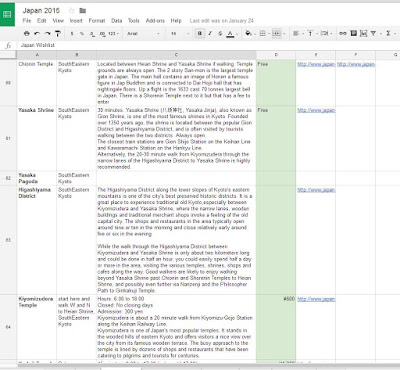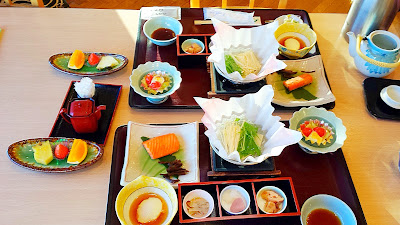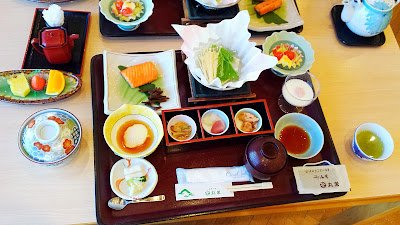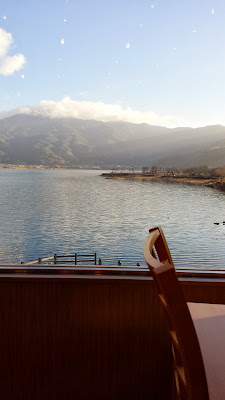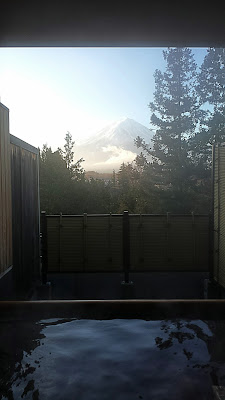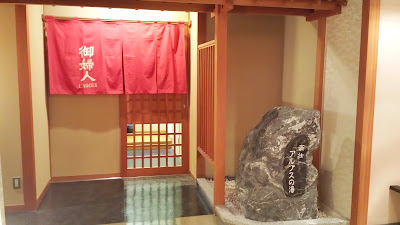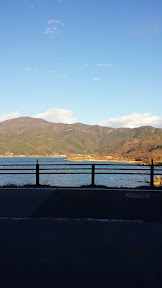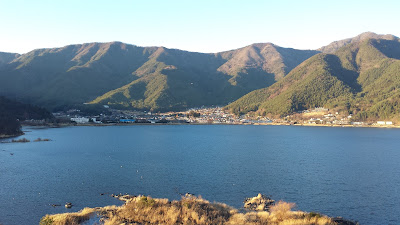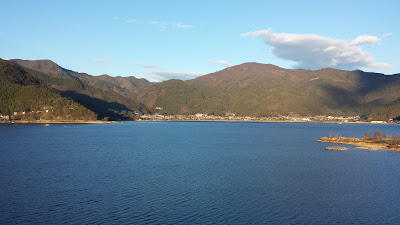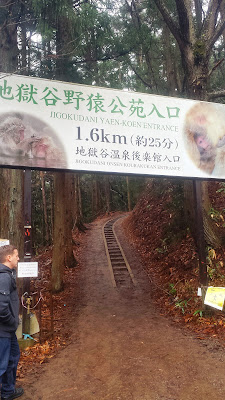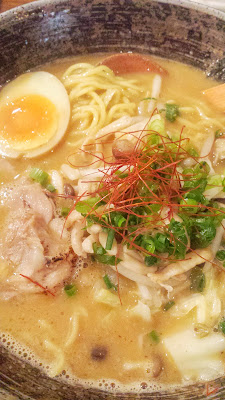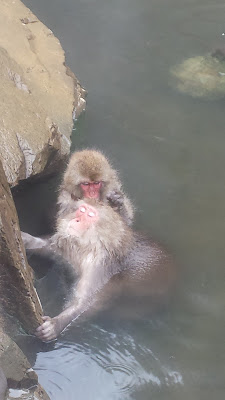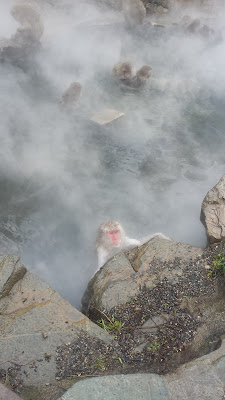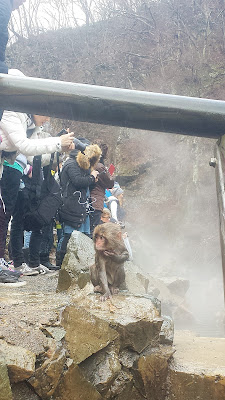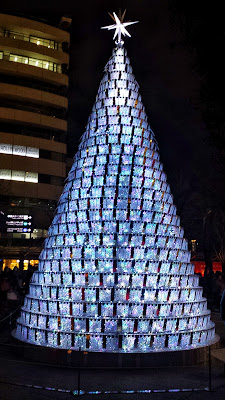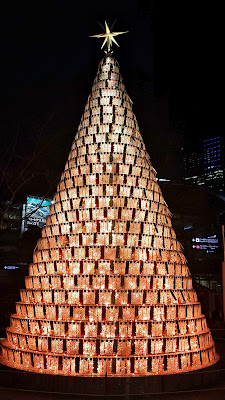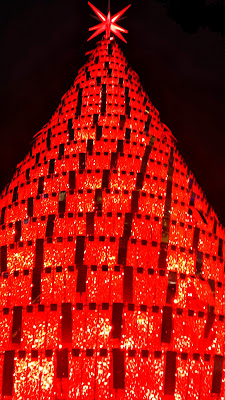If you visit Japan, I highly recommend including Kyoto during your stay if you can. Kyoto was once the capital of Japan from 794 until 1868. Because of that long history as being the capital for 1000 years, you can find a lot of older buildings reflecting traditional architecture that are entire streets and neighborhoods, as well as literally thousands of temples and shrines. In fact, Kyoto has the largest concentration of designated Cultural Properties in Japan.
Details at Kiyomizudera Temple
Kyoto is also famous for its cuisine because as a city away from the sea it grew a lot of unique regional food fit for royalty, and even Kyoto water is reknown and used by many sake producers. With the combination of palaces as well as temples in its culinary lineage, you can choose from enjoying elegant kaiseki cuisine or Buddhist vegetarian temple cuisine. For today’s post, I’m going to focus first in Kyoto Temples and Shrines.
After our onsen stay and dining on ryokan cuisine for breakfast, we then spent a travel day getting from Lake Kawaguchiko by Mount Fuji to Kyoto. You can see it took a few transfers but it is a pretty popular route – so much that the entrance at the Kawaguchiko train station had this nice sign showing the main travel and transfer points.

For us, this means Kawaguchiko (the red dot you see to the left) to Otsuki, transfer there and ride to Hachioji where we transfer again until we reach Shinyokohama (same area as the Ramen Museum I covered last week), and from there a shinkansen to Kyoto! It sounds like a lot of transfers, but checking out and catching a train around 11 AM, we still got to Kyoto sometime around 4 PM in the afternoon to relax the rest of the evening.
On our first full day in Kyoto, we decided to stretch our legs from all that sitting on the train on our travel day by doing a self walking tour of a few of the beautiful and most famous Kyoto temples and shrines. It’s so easy to walk and find a temple or shrine along the way everywhere in Kyoto that you actually need to be careful you don’t get “templed/shrined out” where you see so many they start to blur. I found the Japan Guide on Kyoto extremely helpful in planning which stops we wanted of the many options thanks to their descriptions and photos of each of the sites which are organized by districts in Kyoto.
I recommend adding each of the destinations you are interested in into a custom Google Map like I covered previously in a how to. This then helps you create your own tour based on where everything is, and you can see exactly the distances. I also tracked each option in a spreadsheet with its attributes of what made it special, hours of operation, and admission fee to help me distinguish the options until I narrowed it down to which would be on this walking tour.
So here is my list of Kyoto Temples and Shrines you can visit in a single day just by walking. These I am sharing today are all located in Southeastern Kyoto. I have another walking tour for visiting temples in the Arashiyama District of Kyoto in a future post. This walk starts from Kiyomizudera and goes about 3 km or about 2 miles north to Heian Shrine, but with all the sights along the way it really is an all day excursion.
Kiyomizudera Temple
Kiyomizudera Temple is famous for it’s wooden balcony that gives visitors a view of Kyoto as well as cherry blossoms and maple trees in spring and fall, respectively. Since I came in winter and currently parts of the temple are going through reconstruction, it was not the stage that stood out from Kiyomizudera for me.
Instead, it was
1. Jishu Shrine is a shrine dedicated to the deity of love and matchmaking. Right after passing the balcony, which is super crowded, you will see stairs leading upwards to your left. You should walk pass the god of love himself, Okuninushi, and his rabbit companion, Hare of Inaba who is a messenger.

Specifically for Jishu Shrine, there are two stones on either side that you are supposed to navigate from one to the other with your eyes closed in order to have luck in finding love. Some have people help guide them a little, which means that you will find love but with help.
This area is also full of various shrines to different gods besides love to pray for other kinds of wishes, as well as various talismans varying from ema boards, incense, omikuji (paper fortunes), etc. There are even hitogata paper dolls to “wash away” your health problems by placing them in buckets: when the paper dissolves in the water, your troubles will be cleared up.
You can purchase charms /omamori varying from good health, long life, conception, children, to successful study to traffic safety. Unlike most temples who offer omamori, here at this shrine they have English translations for all the charms and all the altars which helps give a lot of context to what you are seeing.

2. Otowa Waterfall is the reason Kiyomizudera Temple was founded here. After going downhill from the balcony to its bottom, you will find three streams of water where visitors use cups attached to long poles that are disinfected each time using UV rays. The belief is that each individual stream of the three streams offers a blessing of long life, success, and a good love life. Drinking from all three streams is considered greedy, so make your choices carefully!
Higashiyama District
On the way from Kiyomizudera Temple to our next temple, Kodaji Temple, you will be walking through the Higashiyama District which is a historic shopping street area, also referred to by the actual street names of Sannenzaka and Ninenzaka. These streets with its old fashioned storefronts has been serving those on temple visits for centuries and lets you stroll around what feels like the traditional Kyoto of old.
Stores range from selling lots of lucky cat and other animal trinkets to ceramic kitchenware, including lots of chopstick rests that they had glued below their windows as decoration. Besides lots of little stores, there is plenty of food, from restaurants to snack stands including versions of the temple and shrine snacks I highlighted earlier in a post.
Higashiyama District also has a whole map of various healing Buddhist statues you could seek out to touch/rub for merit with your right or both hands. I didn’t visit them all, but I found quite a few without seeking then out. I rubbed Hotei a potbelly deity of good fortune thought to bring prosperity, Daikokuten an Indian deity one of the seven gods of good fortune that you can wish for prosperity, the Temmangu Ox said to bear your suffering for you if you touch the corresponding area of the ox, and statues of Hideyoshi and Nene which you can wish for a happy marriage like them and for peaceful remaining years surrounded by many people like Nene. It can’t hurt to touch just in case it does work right?



Kodaji Temple
Kodaji Temple was established in memory of Toyotomi Hideyoshi, one of Japan’s historical figures who helped play a part to unify Japan, by Hideyoshi’s wife Nene. What is notable about this temple is its Zen Gardens, aka the carefully maintained rock garden. It’s not as famous as Japan’s most well known Zen Garden at Ryoanji Temple (also in Kyoto), but the location in this area is more convenient to seeing a lot in one day, and still evokes the same beauty, even if interpretation of what the designs mean isn’t quite as enigmatic.
I was surprised that this was one of F’s favorite temples/shrines that we visited because he really enjoyed the moss landscaping, and I really liked the delicate shapes in the rock garden. The peacefulness here was very inviting of contemplation and worth the small entrance fee.
Yasaka Shrine
Now continue walking north to Yasaka Shrine. The most distinguishing characteristic of this shrine is it’s great location not far from Gion (Kyoto’s entertainment and geisha district) and there are lots of great restaurants just outside of its gates along the streets of Shijo Dori and Higashi Oji Dori.
This Shinto Shrine has lots of gorgeous lanterns that look great both in the daytime and in the nighttime (it is always open, always free). You can see since it’s close to New Year’s how the stage happens to be decorated for the year of the monkey.

Chionin Temple and Shorenin Temple
Chionin Temple‘s Sanmon Gate is the largest wooden gate in Japan and dates back to the early 1600s. It’s on the way to our final destination for today in Kyoto Temples and Shrines. We didn’t stop at Chionin, just walked by so we can admire the entrance. If you do enter, make sure you check out the largest bell in Japan, weighing some 74 tons and cast in 1633, it requires 17 monks to ring the bell at New Year. The temple grounds are free, but there is an admission fee to visit the gardens and the “Seven Wonders” of Chionin, one of which is a uguisubari or nightingale floor that chirps with every footstep so no one can sneak around!
We also walked by Shorenin Temple without going in (there is an admission fee). Mainly, we admired this beautiful mossy tree just outside. This temple is not as busy as the famous Kiyomizudera or Chionin, and has a tranquil, secret feel with multiple gardens and ponds, teahouse, and paintings to admire that are connected all by covered walkways between the buildings.
Heian Shrine
I knew the Heian Shrine gates was supposed to be huge – it is after all the largest Torii Gate in Japan. I was still shocked when I could already see it down the street – way down the street, but still really visible – from the Shorenin Temple a little over half a mile away. Below, you can see how it compares in sizes to a huge tour bus and cars/people behind me.
In truth, the Heian Shrine isn’t that old – it was built in 1895 for the 1100th anniversary of the founding of Kyoto (then named Heian-kyō). The buildings convey the atmosphere of the Heian Period which had artistic integration with Chinese culture. Heian Shrine is supposed to be a 2/3 scale replica of the original Kyoto Imperial Palace (now destroyed). It was refreshing to have such a big open courtyard space to walk in after the smaller spaces of all the previous stops.
We were pretty beat by this time (it was late afternoon) and I really only wanted to see the main courtyard and the giant gates, so we walked back to our lodging to relax and rest our feet before dinner after this. If you still have some wind though to keep going, there are also huge gardens to visit (the Heian Shrine is free, but there is a fee to enter the garden).
Even though the distance between Kiyomizudera Temple and Heian Shrine is only 3 km or about 2 miles, when I looked back at my phone pedometer at how many steps I took that day, it totaled 19725 steps – or about 8.75 miles!
So of all these stops I’ve shared today in Southeast Kyoto, which do you think you would most be interested in? Do you put together DIY tours in a neighborhood or area when you travel?
Here’s a summary of my Japan Travel post series:
- Guide to Planning a Trip: Research
- Guide to Planning a Trip: Mapping
- Hagoita Ichi Winter Festival at Sensoji Temple, Japan
- Japanese Treats at Temples and Shrines
- Winter Illuminations in Tokyo (Winter Season – November – February!)
- Snow Monkeys in Hot Springs
- Onsen by Mount Fuji covers Onsen 101 and how we loved our stay at Lake Kawaguchiko
- Dining at a Ryokan a look at what a traditional dinner and breakfast might be during a ryokan stay
- Visiting Cup Noodles Museum in Yokohama (just outside Tokyo)
- Visiting Shin Yokohama Ramen Museum
- Kyoto Temples and Shrines (walking tour starting in Higashimaya with stops especially at Kiyomizudera Temple, Kodaji Temple, Heian Shrine)
- Kyoto Temples in Arashiyama
- Kyoto Tofu
- Kyoto Famous Sights of the Kinkakuji (The Golden Pavilion) and Fushimi Inari (Red Torii Gates)
- Famous Signs of Osaka and eating Osaka Food specialities like okonomiyaki, takoyaki and kushikatsu
- Visiting Himeji Castle, the famous white castle in Japan
- Fun at Japanese Cafes and More including Maid Cafe, Cat Cafe; theme parks of J World and Namja Town, a geeky stop at Kanda Myojin, and Ghibli Museum
- Japan Eating Checklist is my top 25 list of things to try to include as an eating experience when visiting Japan
- New Year’s in Japan: Oji Fox Parade, and some photos of a Meiji Shrine visit on New Year’s Day






